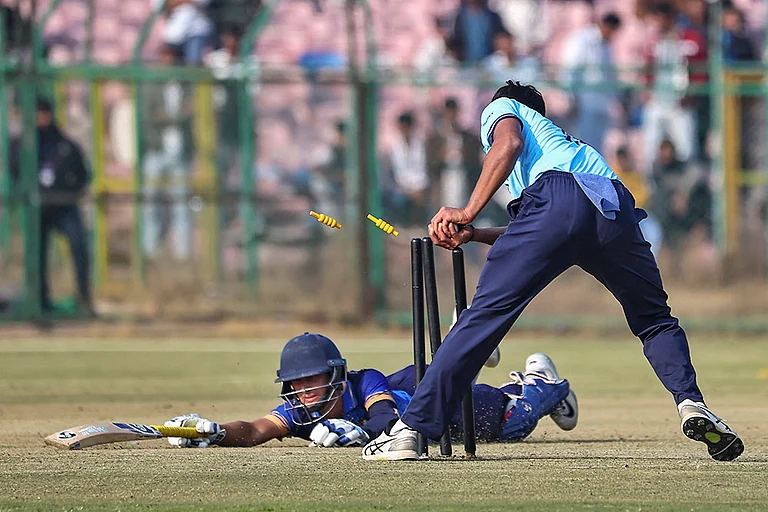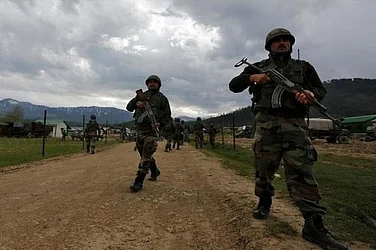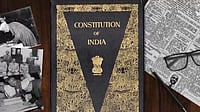The instances of violence against doctors and healthcare professionals have risen in recent years, perhaps because the Covid-19 pandemic overloaded the already strained healthcare community. Or, as several medical associations have argued, it’s just that the instances are now being brought to light more often as a consequence of the pandemic making healthcare professionals prominent in the public eye.
The healthcare fraternity has demanded a central law to tackle violence against healthcare professionals. Amid such a demand, Outlook takes a look at some of the major instances of such violence —often in government-run hospitals— that have sparked major outcry.
Across the nation, violence is an almost daily occurrence for the frontline healthcare professionals at rural hospitals and local health clinics. Junior doctors and residents see the worst of it as they are the most visible and are often the first line of response. Many argue the problem also exists because the quality of communication between the medical professionals and patients, most often the poorer ones, is so broken.
Vandana Das, Kerala, May 2023
Vandana Das, 23, a doctor still in her internship training was stabbed to death by a patient who was brought to the Kottarakkara Taluk Hospital by police on May 10. The patient, a schoolteacher and addict from Kollam, was suffering from withdrawal paranoia when he was brought to the hospital for medical examination early in the morning. The suspect, Sandeep, took a scissors from the dressing room and attacked the people on duty around him at the time, including a policeman. Everyone except Das managed to flee and reports stated that he stabbed her over 10 times. She was rushed to a hospital in Thiruvananthapuram but could not be saved.
Following Das’s death, outrage pulsed through Kerala about the poor working conditions and lack of security that junior doctors like her often face in the line of duty. The House Surgeon’s Association (HSA) and Indian Medical Association (IMA) called for a one-day protest across Kerala. Doctors went on strike and called off duties.
Paribaha Mukhopadhyay and Yash Tekwani, Kolkata, June 2019
At NRS Medical College in Kolkata, the two junior doctors, Paribaha Mukhopadhyay and Yash Tekwani, sustained serious injuries after an attack on the premises against the doctors by a rumoured 200-strong mob after a dispute with the family of a 75-year-old who died at the same hospital the same night.
Tekwani and Mukhoadhyay, who were both interns at the time, suffered head injuries in the attack and were admitted. Mukhopadhyay later underwent surgery for a skull fracture at the Institute for Neurosciences in Kolkata. Their ordeal sparked off a nationwide chain of reaction, with junior doctors shutting down wards and hospitals across states, medical associations calling for strikes and standing in solidarity with their colleagues in West Bengal. Over 300 doctors in Bengal sent their resignations to the state health minister and the Indian Medical Association called for a four-day strike, terming the attack barbaric.
The outrage reached the national capital and resident doctors at the top hospital of the country, the All India Institute of Medical Sciences (AIIMS), also stopped working in solidarity. Ultimately, the Supreme Court agreed to hear a public interest litigation (PIL) on the safety and security of doctors in government institutions across the nation and Chief Minister Mamata Banerjee engaged in dialogue with the striking doctors, acceding to some of their demands so that the hospitals which were consequently paralysed could return to work.
Muzaffarpur, Bihar, April 2017
At the Sri Krishna Medical College and Hospital in Muzaffarpur, a medical hub in North Bihar, violent clashes broke out between attendants and locals after a patient died following the apparent refusal of the doctors to treat her. The patient from Sheohar, Bihar was critical and was brought to be admitted. However, junior doctors refused to attend to her, maintaining that the patient’s condition had worsened and her chances of survival were bleak.
The woman’s subsequent death triggered the clashes and arguments, which then escalated into violent clashes between doctors and attendants, in which over one dozen ambulances were torched by agitating doctors and approximately 50 vehicles badly damaged by the next morning. It reached a scale and level of violence where the police had to resort to a baton charge to disperse the crowd and take control of the situation. Following this incident, there were calls for strikes and local medical associations pointed to the long-growing number of incidents in Muzaffarpur, arguing that this clash was inevitable.
In 2019, reports surfaced from the district of doctors pooling together money to fund quick response teams (QRT) for their safety as the police were not able to provide them with the adequate cover they needed. This was at a time when reports of violent incidents in the hospitals were coming.
Rahul Nair, Hyderabad, May 2023
On May 11, the day after Vandana Das was stabbed to death in Kerala, Dr Rahul Nair, a resident at Nizam Institute of Medical Sciences (NIMS) in Hyderabad was assaulted and surrounded by a group of approximately 20 individuals, relatives of a patient who had died at the hospital.
Reports stated that Nair, a third-year resident, was actually intervening on behalf of another female doctor, whom the family of the deceased 62-year-old woman had tried to assault. The patient died late in the night and Nair intervened to prevent the fight.
Subsequently, the resident doctors went on strike outside the ward itself, sparking off further public outcry, as it closely followed the stabbing the day before.
The Indian Medical Association (IMA) has noted that up to 75 per cent of doctors have faced verbal or physical abuse on hospital premises itself. The fear of patient retaliation and violence has also become a common cause for stress among medical professionals. A pandemic-era law legislating on the violence against healthcare workers lapsed with the end of the pandemic, leading to renewed calls for effective central legislation and better safeguards.


























